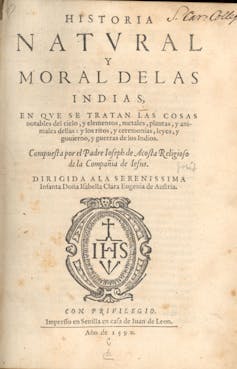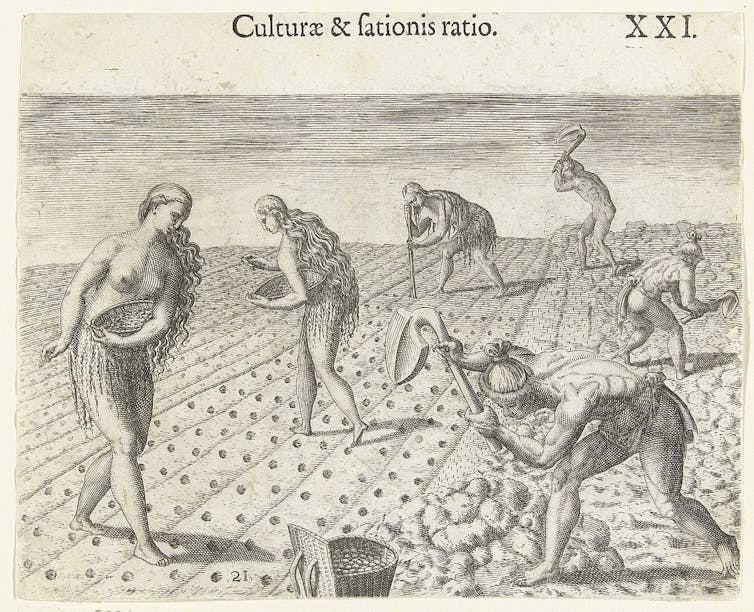
Beginning in the 15th century, the Renaissance in Europe saw a shift in the continent’s mindset towards greater interest in the world beyond its own borders.
In this era, a number of significant maritime expeditions took place, spurred primarily by commercial and political interests, but also by cultural curiosity. These voyages were spearheaded by Spain and Portugal, two strategically located countries where the recently concluded Reconquista against Islamic rule was driving Christian religious expansion. Both nations also had a wealth of seafaring experience.
For a long time, the Earth had been thought of as a flat disc moving through the ocean, but gradually the idea of a round planet took over. As maps and charts became increasingly accurate, the possibility of travelling to China by the westerly route became more and more plausible.
These factors – in addition to significant technological advances like the astrolabe, the sextant and, most importantly, the compass – allowed for huge advances in travel by sea, and opened the door to an intensive period of exploration.
Long-awaited news from the New World
Columbus’ arrival in America was part of this adventurous push, and it is not difficult to imagine the astonishment felt by Spanish explorers when they encountered a world full of hitherto unimagined novelties.
Many of them directed their efforts towards learning and sharing all the new things they recorded about nature, geography and human beings, and this information was acquired, in part, through daily contact with the populations of these territories. The invention of the printing press in 1440 made it possible to disseminate all this knowledge, and the “news from the New World” was received with great interest throughout Europe.
Among these curious and enquiring men were some religious figures who, in their search for better ways to spread Christianity, sought to understand the American world. They realised that in those new lands and cultures there were many valuable things worth knowing and preserving.
José de Acosta and his monumental work
One of these figures was Jesuit missionary José de Acosta. Born in 1540 in Medina del Campo, in Valladolid, Spain, he travelled to Peru in 1572 to work as a lecturer in the Jesuit school in Lima.

The year after his arrival, he was commissioned to travel to the region’s inland areas (he would later also travel through Mexico) to monitor the needs of the Spaniards living there. While there, he learned about the area’s Native American inhabitants, learning their language and collecting a great deal of information about their culture and territory. He also drew on the knowledge of previous explorers like Polo de Ondegardo, as Acosta himself acknowledged in his landmark 1590 work, the Historia natural y moral de las Indias (Natural and moral history of the Indies).
This monumental text is made up of seven books which can be divided into two parts: a first half devoted to natural history, which follows the model of the ancient works known to Acosta (though incorporating elements specific to the New World) and a second half centred on what Acosta called “moral history”.
The first two books deal with cosmographic, geographical and anthropological matters, concluding that, contrary to what many thought, all regions of the Earth were habitable for human beings. The third book describes the four elements and their phenomena (winds, seas, rivers, lakes, volcanoes, etc.), explaining each one through experimental methods. The fourth analyses nature in its different subdivisions (animals, plants and minerals), both the native species and those that were brought to America by the Europeans, as well as those that already existed in both areas.
The fifth, sixth and seventh books describe the “customs and deeds of the Indians”. Unlike other chroniclers and explorers, Acosta depicts his protagonists as having the same rational capacity and full humanity as Europeans. In these books, he speaks of the religion, culture, social organisation, institutions and history of the inhabitants of Mexico and Peru.
Acosta considered both aspects – natural history and moral history – as inseparable. He also put forward ideas about the interaction between the different branches of natural and social study (biology, geography, chemistry, sociology, history) that make up the ecology of the planet’s ecosystems.

A pioneer in his field
The great difference between Acosta’s work and many others written about America at the time lies in his conviction of the unity of the world, of which the New World was just one part. To this end, he analysed biological, geographical and cultural diversity, making him a forerunner in what is now known as earth science or geoscience.
This discipline considers all the planet’s components – geographical, botanical, zoological, meteorological, social, and so on – to be one interrelated system. All these aspects make up the planet’s ecosystems.
In this way, Acosta was a precursor to Alexander von Humboldt, who is considered to be one of the founders of ecology and modern science – it is actually known that Humboldt had read Acosta, as he mentions him in his work Cosmos. One especially clear example of Acosta’s influence can be seen in the Pacific coastal ocean current known as the Humboldt current, which has a great influence on the climate and economy of the region: it had already been documented by Acosta.
Although he never expressly acknowledged it, it is also very likely that Acosta’s investigations and observations were helpful to Charles Darwin in formulating his theory of evolution in The Origin of Species. However, it cannot be said that this model was original to Acosta. Elements of the idea can be found in the works of ancient authors such as Aristotle or Pliny, as well as Acosta’s contemporaries, such as Fernández de Oviedo, Cieza de León or Francisco Hernández.
What this does tell us, however, is that scientific advances and discoveries do not arise in a vacuum. Knowledge springs from a network in which the studies of different authors intertwine, building on and reinforcing one another.
This article is the result of a collaboration with the Ignacio Larramendi Foundation, an institution focused on developing projects related to thought, science and culture in Ibero-America with the aim of making them available to the general public.
For more information, click here.
Beatriz Fernández Herrero no recibe salario, ni ejerce labores de consultoría, ni posee acciones, ni recibe financiación de ninguna compañía u organización que pueda obtener beneficio de este artículo, y ha declarado carecer de vínculos relevantes más allá del cargo académico citado.
This article was originally published on The Conversation. Read the original article.







